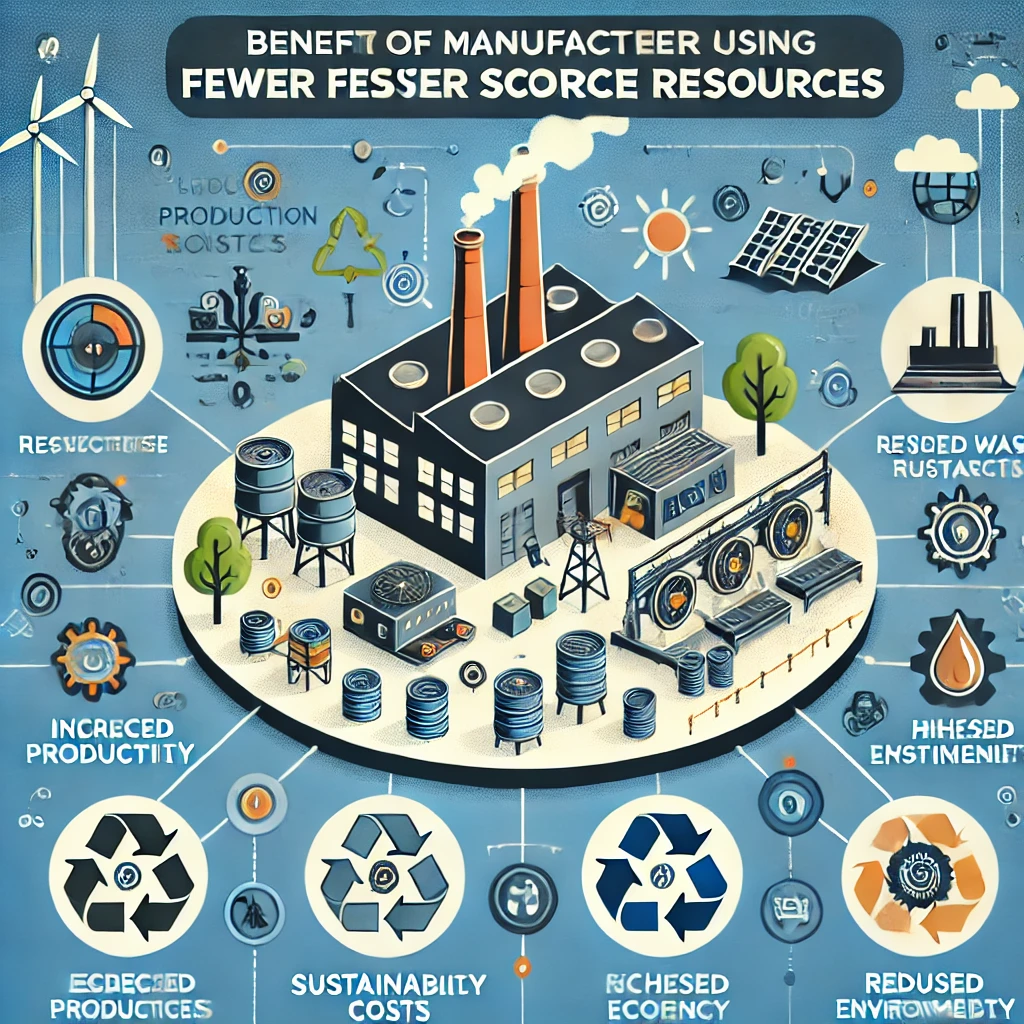Manufacturers are now obliged to embrace sustainable measures due to the erosion of natural resources, increasing prices, and the need for eco-friendly products from consumers. The question posits, how can a manufacturer achieve cost benefits by reducing scarce resource usage? The article discusses the advantages derived from using low materials as well as the costs incurred and considers the environmental impact.
Resource Efficiency in Manufacturing and Why It Is Important
As production becomes reliant on advanced technologies, procuring certain raw materials, rare metals, and other fossil fuels is becoming harder as well as expensive. Businesses that want to remain competitive, effective, and sustainable have to increase their resource efficiency and productivity.
There are Several Key Advantages to Using Less Scarce Resources:
While the use of limited materials increases certain costs, manufacturers stand to gain in other areas: sustainability, increased brand perception, reputation, or in the end – better cost management.
Increased Profit Margins at a Lower Cost: For any manufacturer, the critical aspects of reduced production cost directly result from reduced scarcity of resources. Through the usage of abundant or recycled materials, manufacturers can lower expenditures as follows:
Lower costs for raw materials: There is a considerable disparity between demand and supply for limited resources which drives significantly elevated resource metal prices.
Reduced expenses of waste disposal: Efficient resource use slashes waste production, resulting in lower disposal rates.
Energy savings: Many limited resources often consume a great deal of energy in their extraction and processing phases.
| Cost Factor | Impact of Using Fewer Scarce Resources |
| Raw Material Costs | Reduced dependence on expensive materials |
| Waste Management | Less waste production, lower disposal costs |
| Energy Consumption | Less energy is required for production. |
Social Dimensions of Environmental Protection
The conservation of sparse resources makes the most impact on the environment. Its major advantages are:
- Carbon emissions are lower when fewer non-renewable resources are consumed because fewer greenhouse gases are released into the atmosphere.
- Pollution comes from the mismanagement of resources and, therefore, is less in sustainability-focused practices.
- The removal of threatened resources is often done at the cost of the ecological destruction of the living world.
Reversal and increase in sustainable directions postures correspond to the vision of socially responsible business (CSR) and environmental protection policies.
Emphasizing Brand Loyalty and the Value of the Marketing
As users become more green, many new brands are emerging that focus on sustainability. To meet these goals, businesses can cut down on the use of limited resources to:
- Screen new users who are more environmentally safe and green product friendly.
- Increase brand value by showing the willingness to support sustainability.
- Augment a position of a market leader in the new economically sustainable business environment.
Creative Strategies and Solutions
Businesses that employ these resource-saving steps tend to spend more on advanced equipment and new methods, which results in:
- Designing new materials that will not be expensive, but will be environmentally sustainable forms of resources.
- Use existing resources through the implementation of sophisticated recycling processes.
- Adopt methods of production that lower energy costs and conserve the environment.
These changes promote sustainability as well as improve the overall quality and usability of the products concurrently.
Regulatory Compliance and Risk Reduction
Many nations are on the verge of framing stricter policies towards the depletion of resources. Producers can take initiatives to lessen their dependence on these materials which will help:
- Comply with environmental regulations and evade fines.
- Minimize risks in the supply chain due to lack of resources or embargoes.
- Instill trust in investors through long-term planning.
Examples of Industries Benefiting from Resource Efficiency
Several industries have optimally incorporated the practices of effective use of resources and have reduced their dependence on available resources:
Automotive Industry – Recycled materials and electric vehicles are being utilized to replace fossil-fueled cars.
Electronics Industry – Firms are designing products with lower power consumption and making the parts from scrap metal to reduce pollution.
Textiles Industry – The use of eco-friendly textiles and methods of dyeing fabrics that consume less water are replacing conventional methods which consume a lot of resources.
FAQs
What are the financial benefits to a manufacturer from using limited available resources?
Using fewer raw materials allows the business to save on production, waste disposal, and energy costs thus maximizing profits.
What are some alternatives to scarce resources in manufacturing?
As substitutes, systemic power harnessing, and solar technologies can replace scarce resources like wind and bio-based plastics. Recycled metals are also an option.
How is resource efficiency related to product quality?
Increased utilization of eco-friendly materials results in improved product durability, thus increasing functional value as well as consumer satisfaction.
In which ways do governments enhance a country’s resource-efficient manufacturing?
Governments have the power to regulate environmental policies, subsidize sustainable investment, and push towards the adoption of green technologies among business enterprises.
How can small businesses implement resource-efficient manufacturing?
Small and medium-sized enterprises can adopt more sustainable practices by integrating new waste-reducing energy strategies and more efficient using energy within the production cycle.
Conclusion
How would a manufacturer benefit by using fewer scarce resources? The answer is reputation, cost savings, sustainability, and innovation. By streamlining resource use, companies not only save money, but put themselves in a position to help the environment, follow rules, and serve the green consumer. Leveraging resource efficiency is a way to feature a strong business program, but also a way to foster stronger industries.
